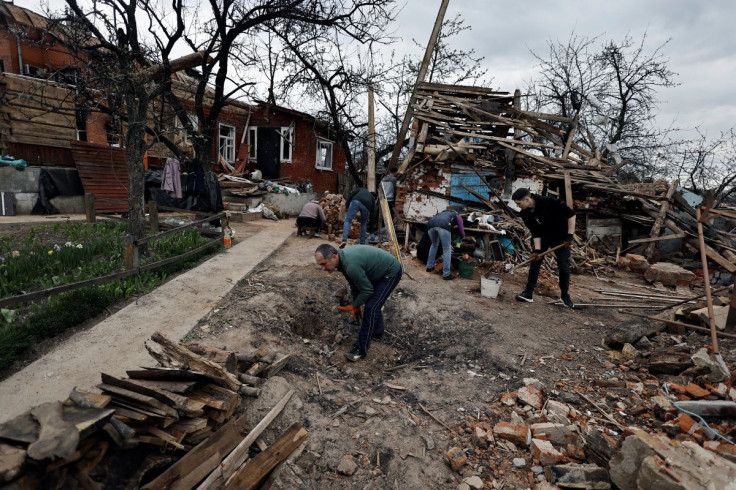'Porridge With Diesel': Ukrainian Hostage Recounts Harrowing 26 Days Inside Chernihiv 'Cellar Of Death'
KEY POINTS
- Ukraine identified the accused as Russian soldiers from the Republic of Tuva
- Over 10 people died in the basement, mostly elderly, and 17 others were shot
- Valeria Vidkovskaya said the heat inside the basement was unbearable
Last week, the Ukrainian authorities identified and charged nine Russian military men involved in holding over 300 Ukrainians hostage in the basement of a school in Chernihiv, later dubbed "Cellar of Death."
The hostages, the youngest being 1.5 months old and the oldest 93, were crammed into the basement of roughly 65 sq m (700 sq ft) for 26 days, resulting in the death of 10 people. The Russian soldiers did not move the bodies, forcing the inhabitants to stay with the decaying corpses for days.
Valeria Vidkovskaya, a resident of the village of Yagodnoe, has recounted the traumatic experience of living in the basement to Radio Svoboda, a Russian language website of Radio Free Europe. She added that they were driven to the basement at gunpoint by the Russians on March 4.
On June 8, Prosecutor General of Ukraine Irina Venediktova said the authorities identified the Russians involved in the crime. The images of the accused, reportedly from the 55th separate motorized rifle brigade from the Republic of Tuva, were also published.
Vidkovskaya identified the men from the photograph. "The very first image is that of a drunken Tuvan who came down to our basement and shot all the phones. The others were there too," she tells Radio Svaboda.
Vidkovskaya said they expected the arrival of Russian troops in Yagodnoye. But, they hoped the villagers would be safe. "I remember how we left. We were allowed to take some blankets from the house. It takes about three minutes to walk from our house to the school where the Russians have set up headquarters. Tuvan military men stood in a row, and there was equipment," she added.
She said the soldiers threatened to shoot everyone with a phone. Though all of them surrendered their phones, one man managed to hide his mobile. He took a couple of images which later went viral. Some of the photographs of the basement showed children's drawings and the inscriptions saying "no to war."
Vidkovskaya said she had taken with her some canned food and oatmeal. "A week later, there were already more than 300 of us. We had to take buckets out of the toilets. We had to cook. Then they allowed us to make a field kitchen right next to the entrance. We warmed up whatever they gave us. They gave buckets of some barley mixed with stew, but sometimes there was a clear smell of diesel. I don’t know if it was kept next to the diesel fuel, or they poured it in," she told the news outlet. Soon, everyone in the basement was warned of "porridge with diesel."
The Ukrainian woman said there was no ventilation, and people struggled with the heat. "There was nothing to breathe. Then we just dug a hole on the wall so that the air would come in at least a little," she added.
She said the first person in the basement died about a week later. "Old people began to die, because there is little food, no air, no medicine," Vidkovskaya said. According to Irina Venediktova, 10 people died in the "cellar of death" in Yagodnoe. Another 17 were killed by the Russian military.

© Copyright IBTimes 2025. All rights reserved.





















